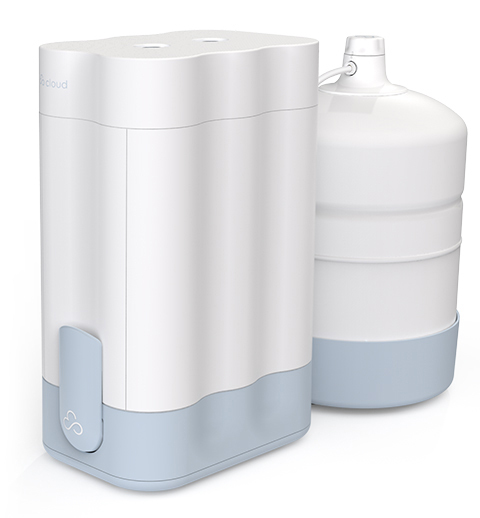Why Replacing Your Filters Is So Important
Do you need to change a reverse osmosis water filter?
Healthy RO systems can remove up to 99.9% of harmful contaminants, including everything from nuclear particles and pesticides to bacteria and parasites.
But over time, old filters start to lose their filtration power.
They get gunked up with all the nasty stuff they’ve been trying to remove, and those particles leach back into the water.
That’s why it’s soooo important to stay on top of your filter replacement.
Later on in this article, we’re going to cover some of the tell-tale warning signs that your filters need to be changed.
For now, let’s look at the different filtration stages so that you can have a clearer picture of what’s going on inside...
One RO System, Many Filters
What’s under the hood of your RO system?
- Sediment pre-filters
- Activated carbon pre-filters
- RO membrane
- Carbon polishing filter
- Remineralization post-filter
Just like the parts in a car engine, eventually, they all need to be replaced.
RO systems are organized in stages that take care of the big, chunky pollutants first, then remove the nastier, micro-sized pollutants last.
It all starts with sediment pre-filters to remove dirt, dust, rust, vegetation and debris.
From there, the water flows through an activated carbon pre-filter. It’s job is to remove chlorine and other disinfectants as well as be a first line of defense against toxins.
Together, the sediment and carbon pre-filters lighten the load for the next phase, the RO membrane, so that it takes less of a beating, lasts longer, and performs at its best.
The RO membrane’s job is to remove lead, arsenic, BPAs, pesticides, and all the other contaminants that cause cancer and destroy your health.
Last but not least, the water passes through a polishing filter to remove any remaining contaminants.
Some RO systems also include a remineralization filter that adds healthy minerals, like calcium and magnesium, back into the water.
How Often Do You Need to Change a Reverse Osmosis Water Filter?
Here’s a quick look at the lifespan of each filter:
- Sediment pre-filter: 6-12 months
- Carbon pre-filter: 6-12 months
- RO membrane: 24 months
- Polishing/post filters: 12 months
Sediment and carbon filters usually wear out first because they take most of the abuse.
Every corrosive, filthy particle in your pipes meets the sediment filter head-on. After that, the carbon pre-filter still has to combat stuff like pesticides and lead.
By the time your water reaches the RO membrane, it’s in the perfect condition to be transformed into pristine drinking water.
The More You Use It, the Sooner You’ll Change It
This shouldn’t come as much of a surprise, but if you use your RO system all day, every day, the filters are going to wear out faster.
Large families tend to burn through more filters, and whole-house systems need replacements more often than under-sink systems.
What’s Inside Your Water Supply?
Is your tap water brown and discolored with dirt and debris?
Then your sediment filter is going to work extra and will probably wear out sooner.
Are the chlorine levels in your city unusually high?
Then your carbon filter could be ka-putzed in eight months or less.
And if you’re from Detroit, Newark, Milwaukee, or anyone of the other worst cities for water quality, your RO membrane is going to have to work double-time to remove lead, copper, bacteria and PFAs.
The bottom line is, more contaminants means a shorter filter lifespan.
Something’s gotta take the abuse and it’s either the water filters or your organs.
Without a doubt, it’s a heck of a lot easier to replace a water filter than a kidney.
How to Tell If Your RO Filters Need to Be Changed
Here’s some of the more obvious signs that your filters need to be replaced:
- Unpleasant odor
- Bad taste
- Discoloration
- Decreased flow rate
If you don’t notice any of these signs, it’s still a good idea to get your water tested by an EPA-certified lab at least once or twice a year. They’ll test for a full panel of contaminants, including things like BPAs that aren’t even tested for at most local treatment plants.
WARNING: Don’t rely on do-it-yourself tests or TDS (total dissolved solids) meters. They’re inaccurate, unreliable, and don’t give the full picture of what’s in your water.
Instead, you could go the easy, stress-free route...
Cloud Water Filters use built-in software to track water usage and automatically ship replacement filters right to your door.
They know exactly when your filters need to be replaced, so you don’t have to worry about a thing.
Click here to learn more.

